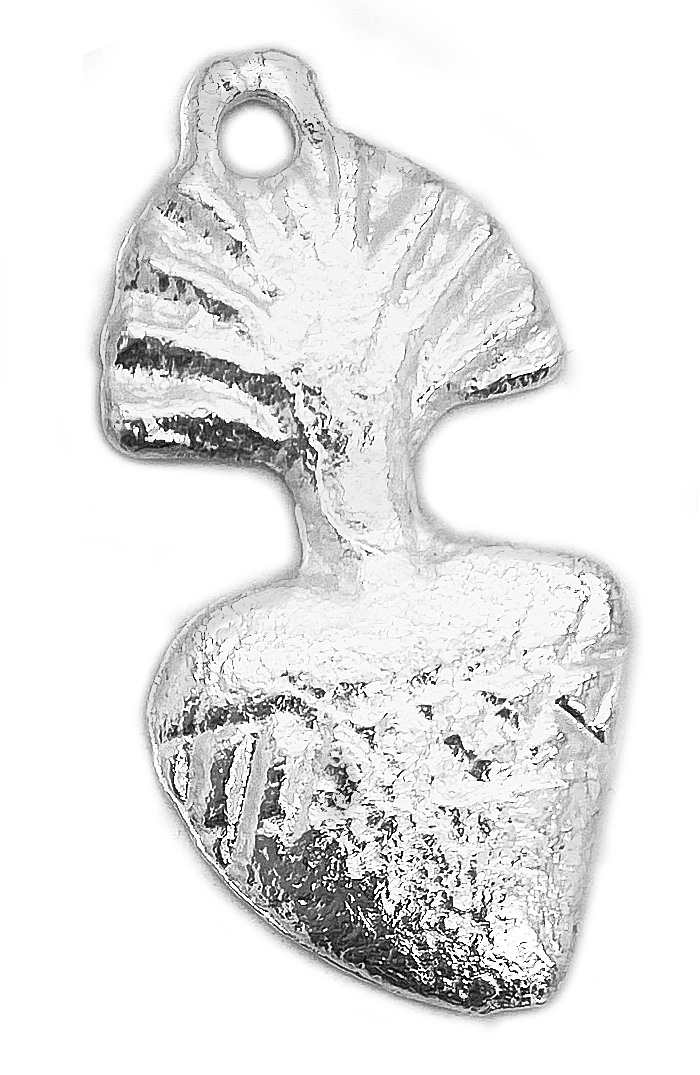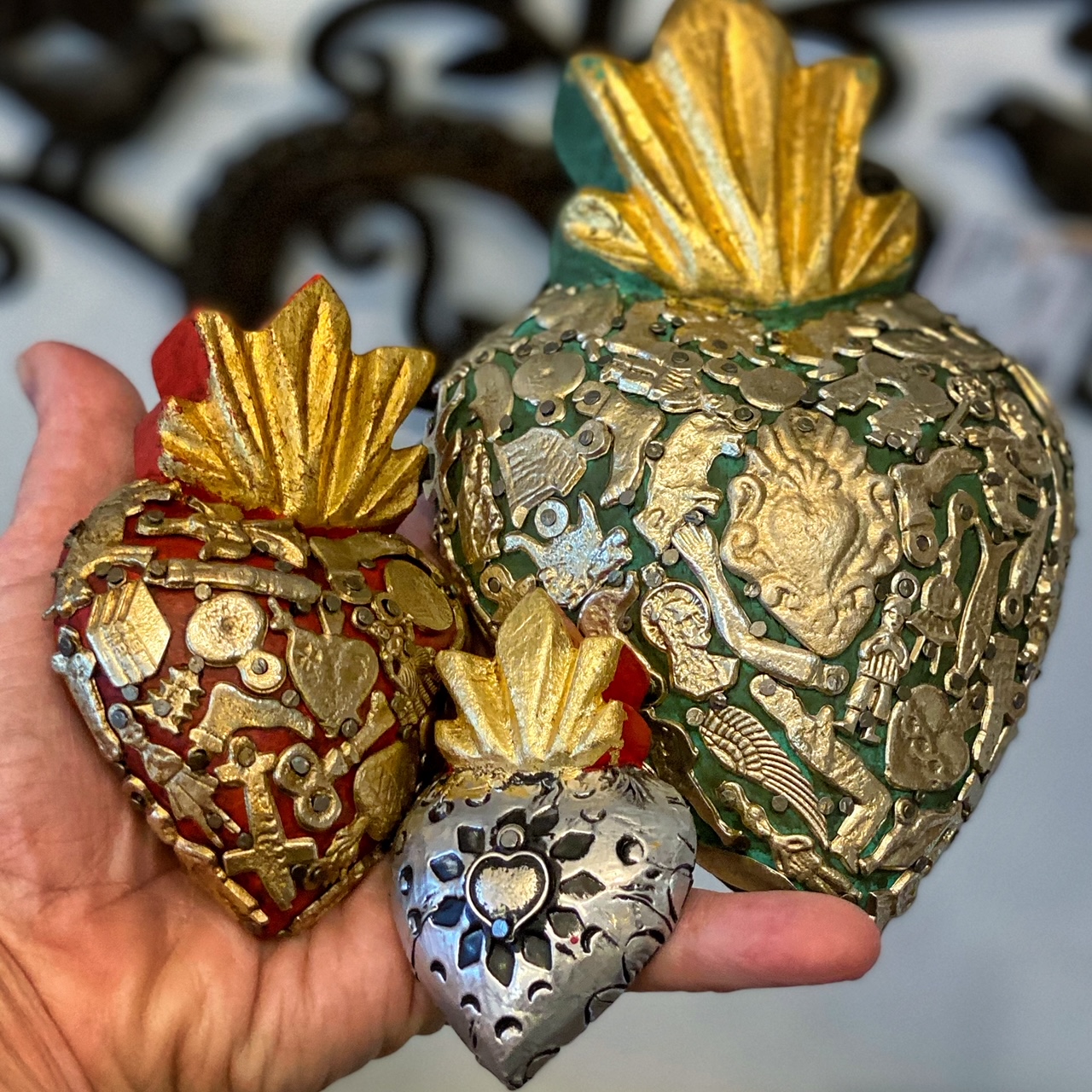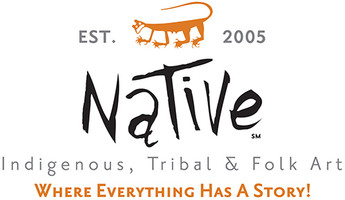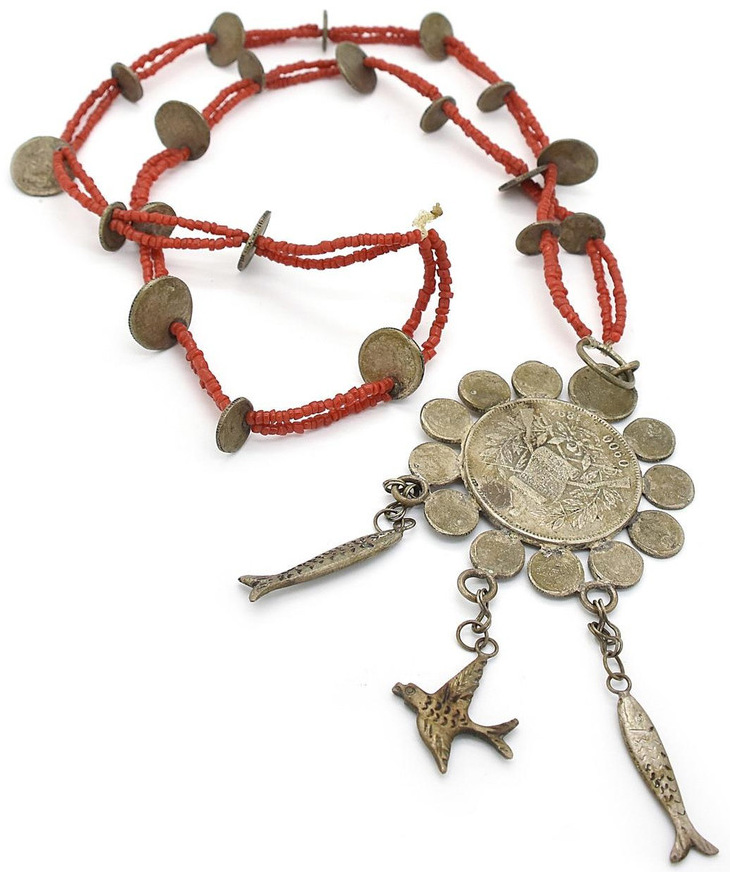 Milagros and Exvotos charms, are tangible expressions of faith, intricately intertwine belief and tradition across Europe and the Americas. Originating in Europe, particularly prevalent in Spain, Italy, Portugal, Greece and France, Exvotos initially took the form of larger plaques. These votive offerings, crafted from metals like bronze or silver, symbolized gratitude or devotion to saints or deities, often depicting the healed body part or resolved situation. The term "Exvoto," derived from Latin meaning "from the vow," encapsulates the solemn promise fulfilled through these offerings.
Milagros and Exvotos charms, are tangible expressions of faith, intricately intertwine belief and tradition across Europe and the Americas. Originating in Europe, particularly prevalent in Spain, Italy, Portugal, Greece and France, Exvotos initially took the form of larger plaques. These votive offerings, crafted from metals like bronze or silver, symbolized gratitude or devotion to saints or deities, often depicting the healed body part or resolved situation. The term "Exvoto," derived from Latin meaning "from the vow," encapsulates the solemn promise fulfilled through these offerings.
 As these traditions traversed the Atlantic to the shores of Mexico and Latin America, Exvotos transformed into Milagros, taking on a smaller, more portable form. The word "Milagro" itself carries deep significance, translating to "miracle" in Spanish. These miniature charms became symbols of hope, carried by the faithful seeking solace and divine intervention in times of uncertainty.
As these traditions traversed the Atlantic to the shores of Mexico and Latin America, Exvotos transformed into Milagros, taking on a smaller, more portable form. The word "Milagro" itself carries deep significance, translating to "miracle" in Spanish. These miniature charms became symbols of hope, carried by the faithful seeking solace and divine intervention in times of uncertainty.

What distinguishes Milagros is their diminutive size compared to Exvotos. While Exvotos were often larger plaques, Milagros are small and delicate, easily carried or worn as adornments. In Mexico, Milagros hold a special place within the sacred confines of churches, where they serve as poignant reminders of faith and supplication.

Adorning altars and shrines dedicated to various saints and religious figures, Milagros are often left as offerings by devotees seeking divine intervention or expressing gratitude for answered prayers. These tiny charms, shaped like body parts, animals, or symbols of everyday life, represent the heartfelt desires and struggles of the faithful. Whether pinned to statues or hung from strings, Milagros create a visual tapestry of hope within the church, where each one tells a story of resilience, belief, and the enduring quest for miracles.
In contemporary Mexico, Milagros maintain their cherished status in both religious and secular settings. While they remain essential in religious ceremonies and personal devotions, they have also evolved into decorative elements and cultural symbols. Milagros are often seen adorning wood-carved hands and hearts, integrated into jewelry pieces, and enhancing household altars, serving as tangible reminders of the enduring faith and resilience of the Mexican people.
As Milagros journeyed to Guatemala, they acquired a distinct flair, taking on intricate three-dimensional forms unlike their one-sided counterparts. Crafted with meticulous detail, Guatemalan Milagros boast intricate representations of animals, flora, and fauna, reflecting the country's rich cultural heritage. These miniature charms, adorned with symbols inspired by Guatemala's natural world and Mayan cosmology, serve not only as tokens of faith but also as cherished expressions of Guatemala's enduring spirit and ancestral reverence.

Peru's Milagros charms exhibit distinctive characteristics that set them apart from their counterparts in other regions. Unlike the smaller, delicate forms found in Mexico and Guatemala, Peruvian Milagros often possess a larger, more robust appearance. Additionally, Peruvian Milagros are renowned for their use of a variety of materials, ranging from metals like silver and gold to more unconventional mediums such as clay and alpaca wool
Walking through bustling markets in Mexico, Guatemala, and Europe, or exploring churches and religious sites, you can't help but be intrigued by the variety of Milagros and Exvotos on display. Each Milagro or Exvoto comes with its own tale of miracles and blessings, offering comfort and reassurance.
All photos property of Native and cannot be reproduced without permission.



